Scientific Facts
| Common Name: | Mini Rex |
| Scientific Name: | Oryctolagus cuniculus |
| Life Span: | 7 to 8 years |
| Size (Adult): | Small |
| Weight (Adult) | 3.5 to 4.5 pounds |
| Habitat: | Human homes, gardens, yards, fields |
| Body Shape: | Compact |
| Country of Origin: | Domestic variety from Florida, a mutation from France |
Physical Description
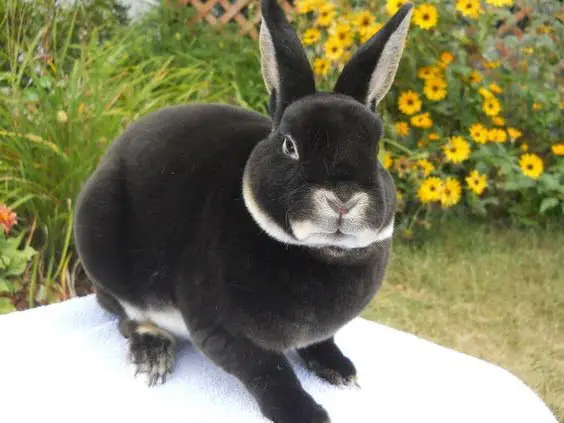
The Mini Rex is a breed of rabbit recognized by the American Rabbit Breeders Association. It is a domestic rabbit that was developed in 1984 in Florida by Monna Berryhill. The Rex mutation was from France and was derived in the 19th century. This mutation is recessive and may cause the hair of the rabbit to protrude outwards instead of staying flat against the body.
This rabbit is small and has a plush coat with a friendly personality. It is one of the most popular rabbit breeds in the US. When fully grown, a Mini Rex can weigh from 3.5 to 4.5 pounds. It has a compact body structure while the fur can grow up to 5/8 inch.
Learning the Mini Rex Standard
The Mini Rex is very active in competitions and shows. The ARBA has created a standard for Mini Rex rabbits, and pet owners who want to include their rabbits in the competition should learn this standard by heart.
A Mini Rex must have a rounded back with a well-developed shoulder, the midsection and hindquarters must be full and well-developed as well. The head must be well-filled and the neck short. The ears are thick and should not be longer than 3.5 inches.
A Mini Rex should have a medium-fine bone structure rather than shorter legs. The fur must be very dense, upright, and straight. The hairs must be short and springy but not too soft and too silky to touch. The fur should be from ½ inch to 7/8 inch long. Toenails must be complete. Missing toenails can disqualify it from the event.
Judges give the perfect Mini Rex 45 points for its body, 6 points for the head, 5 points for the years, 35 points for its fur, 15 points for the color, and 5 for overall condition. A total of 100 points for the best rabbit.
There are four classes for rabbits based on age: the Senior Bucks which are 3 to 4.25 pounds over 6 months of age, Senior Does which are 3.25 to 4.5 pounds over the age of 6 months, Junior Bucks with 2 to 3 pounds of weight under 6 months and Junior Does from 2to 3.75 pounds under 6 months. Juniors that exceed their weight limits could be shown in a higher age class, and no animal may be shown in a lower age class than its age.
Rabbit Shows for Mini Rex
Most Mini Rex rabbit shows are local or on a national level. Most are sponsored by the ARBA, while some are supported by local Breeders Associations. Rabbit shows are according to the class where the color, gender, and age also matters. The shows are announced three times, and if there are not enough candidates, the class may be canceled.
Official Colors and Markings
The following are the recognized Mini Rex colors and markings:
- Black – Mini Rex rabbits with black coats must have dark and rich black that runs deeply in the skin and blends to a dark blue under color. These rabbits have dark brown eyes.
- Blue –Rabbits with blue coats should have dark blue coats that run deeply to the skin and has a medium-blue under color with blue-grey eyes.
- Castor – Rabbits with castor color has a rich chestnut color that is tipped with black. The color underneath is slate blue. The ears have black ends with belly, eye circles, and jowls in cream color. The eyes of castor rabbits are brown or black with blue.
- Chinchilla – The Chinchilla is a mixture of black and pearl, which is the color of the true Chinchilla. This rabbit has slate-blue under hair and has a white belly. The ears are laced in black with eye circles in pearl. The upper part of the tail is black, while the bottom part of the tail is white. The eyes of a Chinchilla may be brown or blue-grey.
- Chocolate – Chocolate Mini Rex has lovely chocolate brown coats and has a dove-gray under color plus brown eyes.
- Himalayan – Himalayan Mini Rex is bright white while the ears, tail, feet, and nose are black or dark blue. It has pink eyes and dark toenails.
- Lilac – The Mini Rex lilac color has a dove-grey tint and a lilac shade. Toenails and eyes match and are bluish-grey.
- Lynx – The Mini Rex Lynx color is light-fawn tipped with lilac. The rabbit has white under-color and with white eye circles, belly, jowls, the underside of tails, and inside of ears. The belly has a lilac under color, and the eyes are blue-grey.
- Silver Marten – The Silver Marten, has a variety of colors, including blue, black, lilac, or chocolate colors. The underbelly is silver/white, as well as the chin, tail, and head.
- Opal – These rabbits are medium blue, with a fawn-intermediate color and blue-grey under fur color. The underside of the tail, jowls, inside ears, and eye circles. The eyes are blue-grey.
- Otter – Mini Rex Otter varieties accepted colors are chocolate, blue, black, and lilac. There is cream color surrounding the eyes and on the belly with appropriate under colors. Otters must have Rufus marks lacing ears, the area behind the neck, the inner thighs, and the edge of the stomachs.
- Red – Mini Rex Reds must not have shading or little shading as much as possible. It must have a cream belly while the eyes are brown.
- Sable – Mini Rex Sables is a rich sepia brown color that will gradually fade to a lighter sepia on the side of the body, chest, inside the legs, belly, and under the tail. These rabbits have brown eyes.
- Sable Point – Mini Rex Sable Points have lighter brown, darker ears, tail, nose, and feet. The eyes are brown.
- Seal – Mini Rex Seals have a dark brown body that gradually fades to a lighter color on the chest and belly. The eyes of these rabbits are brown.
- Tortoise – Mini Rex Tortoises are rich orange with a dark shade along the belly, rear, feet, sides, ears, and face. Tortoise rabbits have brown eyes.
- Red-Eyed White – these are pure-white Mini Rex with pink eyes
- Blue-Eyed White – these are pure-white Mini Rex with blue eyes
- Broken – this is Mini Rex color, which is an accepted color together with white.
- Tri-Color – this is Mini Rex with white with either orange and black, fawn and lilac, fawn and blue and orange, and chocolate.
- Pattern – This is Mini Rex rabbits with a balanced nose and eye markings, colored ears, and tail. Colored body spots and the colored areas should be 10 to 50% of the rabbit’s body.
New colors for the Mini Rex have been added recently. In 2012 the color Smoked Pearl was acknowledged as the 19th variety while the Sable Mini Rex is the newest color variety. New colors for the Mini Rex will be presented soon by the ARBA.
Fast Facts
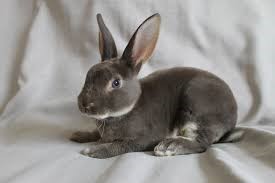
Brushing the coat of the Mini Rex is important since it keeps it smooth, clean, and free from pests. But do this once or twice a week only because doing this more frequently can damage the fur’s texture.
Don’t bath your pet as well. Bathing can stress them. It also reduces the natural oils that the rabbit coat excretes and can make the coat rough, brittle, and damaged.
Reproduction
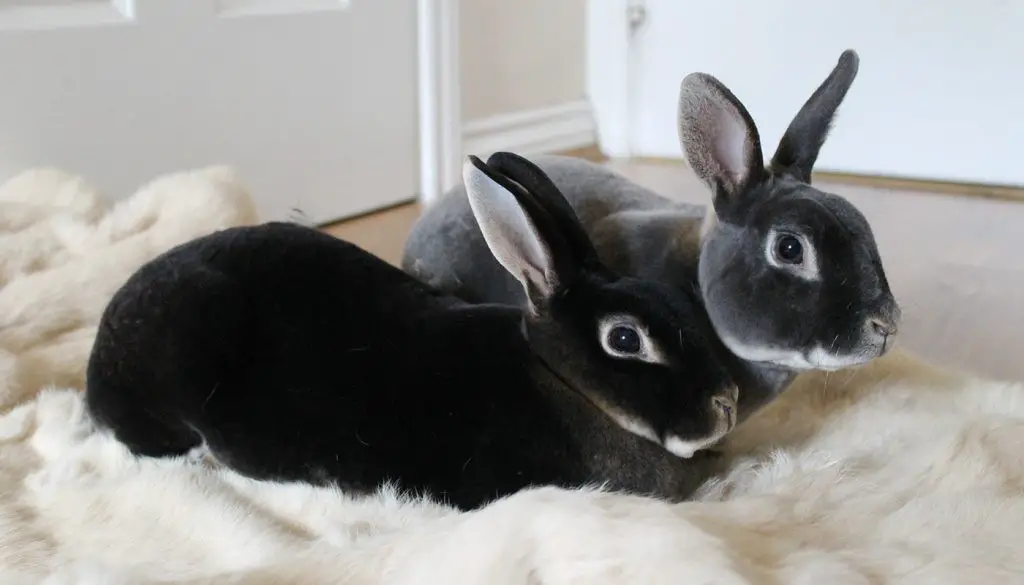
You must first identify if the buck and the doe is ready to mate. If, after a physical examination, you find out that these rabbits are ready, you may now proceed with the mating process. The doe is placed in the buck’s cage to make the mating act more successful.
Just like most rabbits species, the male and the female will run and play before they mate. The buck runs after the doe, and she will either run or sit still. He will sniff the doe to get to know her better. If the female is okay with this, she may raise her hind legs in response, and this prompts the male to mount her and violently thrust his hips forward. He will throw himself at the doe. Usually, the buck will thump his hind legs signaling that he has mated successfully. If the mating did not go successfully, the male might try again after 15 minutes.
Like most rabbits, the Mini Rex doe will look for a suitable nest once she feels she is ready to deliver her babies. The gestation period is usually around 30 or more days, but some may deliver earlier. She will look for a nest away from other rabbits and will line this soft fur, grass, or hay. Offering these materials is important so that the doe will easily complete her nest.
The mother will deliver her babies, usually having 5 babies in one litter. The babies are blind, naked, and very vulnerable. The mother will remain in the nest for a few days and then will leave her babies only to return at night to nurse them. The babies will open their eyes after ten days and then leave the nest after two weeks.
Fun Facts

The Mini Rex is one of the best rabbit breeds that will work best with children. Its size and good temperament also make it a good choice for seniors, singles, and first-time pet owners.
Personality and Behavior
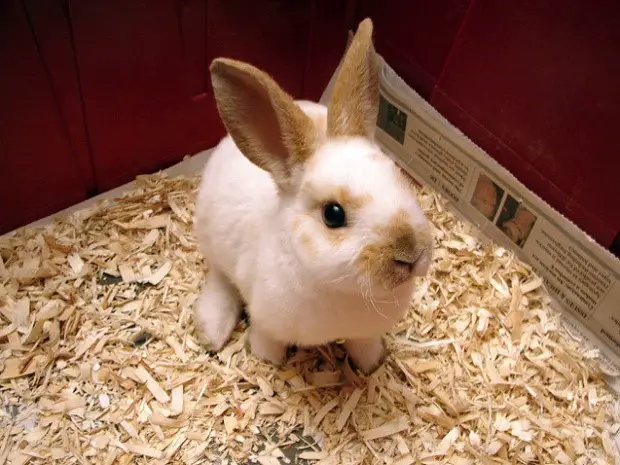
The Mini Rex is popular for families that are looking for first-time pets. It is quiet, calm, and docile, so these are good choices for singles, couples, seniors, or young children. But don’t leave children and rabbits unattended. If a young child holds the rabbit too tightly, it can squirm and may fall from the child’s hands. This is why children should play with a Mini Rex while sitting on the ground.
The Mini Rex is smart but may need time to train just like most rabbit breeds. You can train this to stay, come to you when called, and even potty train. Just be patient and use a reward like food or treats to train your pet. Don’t yell or shout when it is not able to follow your command. Sometimes, even the most docile rabbit can become aggressive if it does not want to train.
Comparable Breeds
The Mini Rex is comparable to other small and medium-sized breeds like the Mini Lop. This is a medium rabbit with a compact body that can live from 5 to 10 years. It has a friendly nature, is playful and affectionate, making it the perfect rabbit for singles, families, and seniors.
Another comparable breed is the Mini Satin Rabbit, a mini rabbit breed with a compact body. This is similar to the Mini Rex because of its size and weight, with adults weighing 3 to 4.5 pounds. Mini Satins are sweet, calm, and docile, which is the best for singles and families.
Care of the Mini Rex
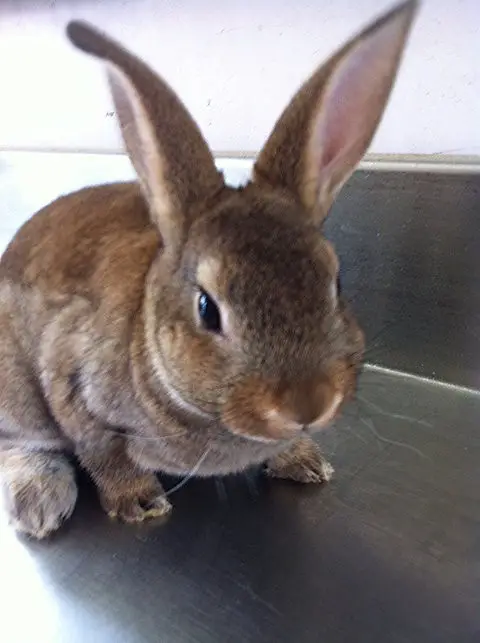
Caring for a Mini Rex is like caring for other rabbit breeds. You must ensure that your pet has the correct diet, housing, companionship, and take it to a vet for correct medical treatment.
Take note that the main food of captive-bred rabbits is hay. Hay should be the bulk of their diet, but you may also use pellets designed specifically for rabbits. Commercially-prepared food also has added vitamins and minerals to benefit your pet rabbit. You may include vegetables and fruits to create a well-rounded diet.
You must provide unlimited fresh water and hay. Hay is important in keeping the rabbit’s digestive tract healthy and regular. Put water in a large and heavy shallow dish so that your rabbit can drink from it. A heavy dish is important, so your rabbit won’t knock it over as it moves inside the cage. Another way to place water inside the cage is to place it in an inverted bottle with a spout where the rabbit can drink from it
Mini Rex is a lovable pet, but it can take time to train. You must first earn its trust by interacting with your pet daily. Play with your pets every day. Also, rabbits like the Mini Rex are social animals and need to have companions. So you can’t just settle with one rabbit as a pet; otherwise, it can become lonely and depressing. Have at least two or three rabbits, but make sure that you have a large enough enclosure to house them.
Supplies and Cages

The enclosure for captive Mini Rex should be made of wires with a removable plastic bottom; this is where the rabbit’s droppings fall, so it is easier to maintain the cage. The floor of the cage must have soft bedding, so it’s warm and comfortable for your pets.
Place a rabbit hay feeder on the side of the enclosure so your rabbit can eat when it feels hungry. For the cage bedding, you may use dried grass, hay, wood shavings, or pelleted horse bedding. You may clean the cage with a safe cleaner or natural cleaning products. Never use any cleaning product that’s toxic for your pet.
Everyday spot cleaning is needed. Rabbits will eat their poop, so you must remove these as soon as you see one. Replace the bedding regularly or at least every week. This will remove any annoying smells.
If you plan to breed Mini Rex rabbits, have a separate enclosure for mating and housing baby rabbits. Take note that baby Mini Rexs are born without fur and with their eyes closed. Place the baby rabbits in a warm enclosure to keep their bodies at the right temperatures.
Health Concerns
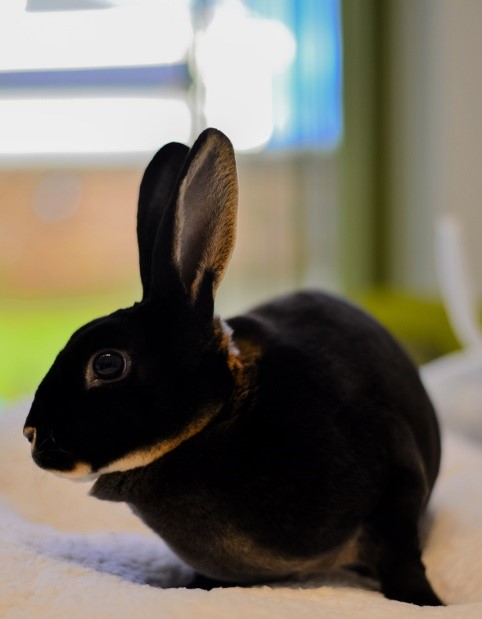
Mini Rex is known for being a very hardy rabbit breed and is not affected by the disease in their natural environment. The most that these rabbits may be affected with are pests such as mites, ticks, and fleas because these naturally found in their environment.
Captive rabbits are not immune to common rabbit diseases. Therefore, you must always be mindful of your rabbit’s state of health and temperament. Any change may be a sign of illnesses. You must take your rabbit to a vet for standard vaccinations and tests which can assess the overall health and development of your rabbit.
Consider that some rabbit breeds have sensitive digestive systems than others and thus may be more prone to different digestive health conditions. Have your rabbits checked for enteritis, bloat, and stasis, which are usually common in rabbits, which are less than two months old?
Another thing to check is ear or fur parasites such as mites, fleas, and ticks. Usually, rabbits with these pests live in an enclosure with poor hygiene, poor husbandry, and poor maintenance.
Monitor your pet for any signs of illness such as poor appetite, nasal and eye discharges, diarrhea, constipation, and vomiting. Rabbits that have an unsteady gait, restlessness, and sleepiness should get medical attention right away because these are unusual signs of illness.
De-worming is also recommended for all rabbit breeds. Worms are a major concern, especially with rabbits that are taken from the wild or are bred from wild parents. Deworming should be done in the spring and fall.
Use a pea-sized amount of deworming paste and put it in the rabbit’s mouth. Follow the dose according to the product packaging to get the best results. Has your pet checked for worms at least once or twice a year?
Teeth
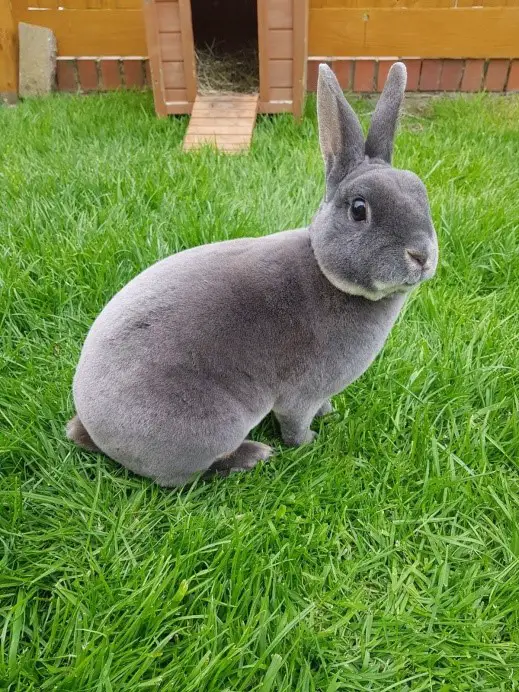
Aside from its medical needs, you also need to check for your rabbit’s teeth. Rabbits need regular dental check-ups because their teeth tend to grow very fast. The reason why rabbits chew so much because it needs to file down their teeth to prevent it from growing too long. When this happens, teeth can grow right into the rabbit’s mouth and jaws, causing severe pain and poor appetite.
Help trim the rabbit’s teeth by offering hay as it files down the rabbit’s teeth naturally as they chew. Monitor your rabbit’s dental health to avoid complications and to save from expensive medical and dental bills.
Spaying or Neutering

Rabbits are naturally promiscuous, and if you don’t spay or neuter, the population of rabbits in your home can become too overwhelming. Spaying and neutering will control their ability to breed if you want to keep these rabbits in your home.
Spaying is done while your rabbits are still young. However, some vets wait until the rabbits are in their sixth month to be safe. Bucks are also neutered at a young age or as young as three months to reduce aggression. Always consult a vet on the best way to go about spaying and neutering your pet.
Grooming
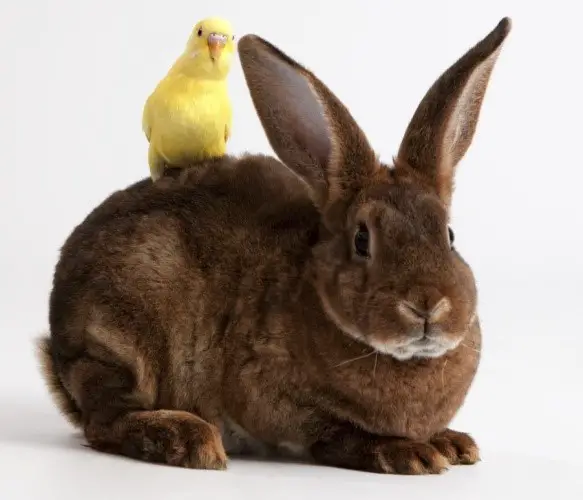
Mini Rex has a luxurious fur with some short while other varieties have longer coats. These rabbits will need regular weekly or bi-weekly grooming. Brush the fur to keep their coats clean, shiny, and free from pests like mites and parasites.
Use a small brush at least weekly. Groom more frequently during their molting period, to prevent wool blocks and ingestion of fur. This can accumulate in the digestive tract causing blockage and other complications.
And if your rabbit is very dirty, never bath it because this can stress them. Just use a damp towel to spot clean your pet. Wipe the rabbit down with the towel and dry off with a clean, dry, and soft towel.
Trim your pet’s nails monthly and check for overgrown teeth. You can ask the vet to cut your pet’s nails and check its teeth if you are not comfortable doing this. Check your pet’s big ears for parasites and to remove dirt and dislodged fur.
Mini Rex may be active in the evening or during the daytime, so make sure to feed them according to the time they are active. Captive rabbits should sleep an average of 8 hours a day. These may sleep together inside their cages for warmth.
Availability – Where to Get One?
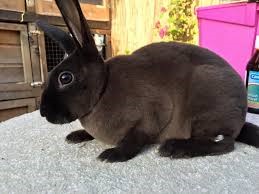
The cost of buying a Mini Rex depends on whether you are getting it from a breeder or a local pet shop. The price may depend on whether you are getting a rabbit for a pet or show. Show-grade rabbits cost a fortune, and the price depends on gender, age, coat color, and form.
When looking for a reliable breeder, be sure that you are getting a rabbit that’s healthy with no genetic disorders. Buy only from reliable breeders who have experience breeding Mini Rex.
Mini Rex is bred for show, and you may see this in trade fairs and farm events. Events and contests are also held to sell prized rabbits. Buying a Mini Rex from these events can cost a small fortune.
If you chose to buy a Mini Rex online, you need to pay for an expensive specimen and more for shipment and handling. But you can also save money from paying for shipment and handling by buying your pet from a local store or a trade event.
How to Care for a Mini Rex
Caring for a pet Mini Rex is just like caring for other rabbit breeds. Remember that rabbits are rabbits, the only thing that may differentiate rabbits is their origin: if the rabbit is wild or captive rabbits. For wild rabbits, making sure that the animal’s living conditions are similar to its natural environment is important. If the rabbit is used to a hot climate like in the desert, provide an enclosure that has a similar climate like the desert where it’s from. If the creature is used to the water, including a water feature in its cage design.
The diet of a wild rabbit also depends on where it is from. Make sure to follow these, and you’ll have no problem when it comes to its nutritional needs. And finally, care also depends on the rabbit’s natural behavior and temperament. If the breed thrives in a community or a social group, then you need to get not just one but two or more rabbits. If the rabbit is known for being territorial or aggressive by nature, then it may be better off with itself.
For captive rabbits, it’s another thing. You must ensure that it has the correct diet, housing, companionship, and take it to a vet for proper medical treatment and preventive care. Take note that the best food of captive-bred rabbits is hay. Hay is important in their diet, and rabbits can chew this all day long.
Aside from hay, you may also use commercially-made pellets for rabbits. Add vegetables and fruits to create a well-rounded diet. Offer food that’s found in their natural habitats such as grasses, twigs, nuts, seeds, birch, brambles, maple trees, and weeds.
Leave fresh water and hay inside the rabbit’s cage. Hay is rough and is very helpful in keeping your rabbit’s digestion healthy and regular. Place the water in a large, heavy shallow dish so that your rabbit can drink from it and replace this water at least twice a day.
Do you keep your rabbit indoors or out>? We recommend constructing an outdoor enclosure instead of an indoor one so the Mini Rex can have room to play and run about. You might be worried about the weather or common predators of your pet, but if you keep the cage warm and secure it with strong wire and place it under lock and key, you won’t have to worry about predators.
Remember that captive-bred Mini Rex can become a good pet, but it can take time to train. Despite its calm and friendly demeanor, you will surely get a frisky and nervous rabbit from the store. It will help a lot if you interact by playing with your pets daily. Use treats and food to train your pet. What you can do is to sit in front of your rabbit and place some treats nearby. Let the rabbit eat the treats until it is very near you. Place the treat on your hand and watch it move to your hand to eat the treat. Do this repeatedly until your rabbit gets it. After several tries, it will soon understand that you bring treats, and you are not a threat in any way. It will soon be more confident to be with you.
Captive rabbits are social animals, so it’s best to have more than one rabbit as a pet. Some experts say that rabbits can die of loneliness. Although this is quite overrated, rabbits may feel lonely and depressed if it is alone in its cage. It needs another rabbit to be with.
So, always think twice about getting a rabbit for a pet because you might end up getting more than what you wanted.
FAQs
Can you keep a Mini Rex as a pet?
Yes, a Mini Rex is a good pet. Because of its sweet, timid, and sometimes laid-back attitude, it may be a good pet for singles, seniors, and also for first-time rabbit owners.
Can Mini Rexs eat meat?
No, these rabbits are herbivores, and this means that these won’t eat meat, only plants. Mini Rexes will eat plants and parts like roots, bark, twigs, stems, leaves, flowers, seeds, and more. It will also eat vegetables and fruits, and you can also feed it commercially-prepared pellets for rabbits.
How do you tame a Mini Rex?
To tame a Mini Rex, you must handle this constantly and play with it so it can trust you. You may try giving your pet some treats so it will learn how to trust you. Sit in front of the rabbit and just let it follow a trail of food to where you are. Do this daily and watch it warm over you instantly.
Should you pick up a rabbit from the forest?
No, don’t ever pick a wild animal such as a rabbit from the forest. You can’t tame a wild rabbit, and you won’t be able to take it home for a pet as well. If you spot an injured rabbit or any wild animal, call animal services to provide the best care.
Does Mini Rex eat fruits and vegetables?
Yes, you can give a captive Mini Rex some fruits and vegetables. These rabbits will also eat commercially-prepared rabbit food. Make sure to feed only organically-grown produce to avoid toxins and other chemicals that may affect your rabbit’s health.
What do Mini Rexes eat?
Mini Rexes are herbivorous, which means that they will only eat plants. They will eat all plant parts from the plant roots to the fruits, and they will also eat seeds, weeds, flowers, and the tree bark.
Can rabbits swim?
Yes, rabbits can swim but not as good as other water animals. The aquatic cottontail is a breed of rabbits that can swim, and one of its impressive techniques is that they can completely submerge in water with only their noses on the surface to escape predators.
Does it hurt when a Mini Rex hits you using its hind legs?
Yes, despite its size, the Mini Rex has very sharp claws in its hind feet. It can scratch you and bite you if it feels provoked. The rabbit will do this if it feels threatened and as a last resort to escape from predators.
Do Mini Rexes need water to swim in?
No, a Mini Rex will prefer a simple enclosure with just its food and water bowls or container, a bed of hay, and some toys, but it will not need water to swim in.
How do you clean a Mini Rex’s cage?
You must first remove the rabbit and place it in another cage. Use a hose and some cleaning products and clean the cage well. Clean the walls, bottom, inside accessories and toys, and remove the pan at the bottom to dispose of its droppings. Clean this pan well and use disinfectant.
Will Mini Rexes eat their poop?
Yes, Mini Rexes are just like other rabbit breeds as it will eat their poop. The rabbit understands that these still have nutrients in them. But they will only do this once and will not consume previously pooped droppings.
Are Mini Rexes endangered?
No, Mini Rexes are not endangered. These rabbits are present in large numbers in many states in the US and are still one of the most recommended breeds for families and first-time owners, and thus, it remains the least concerned species.
Where do Mini Rexes live?
Mini Rexes live in human homes and properties. This is because it is a domesticated rabbit breed and thus won’t be found in the wild. In case you spot a Mini Rex in the wild, this means that the rabbit may have escaped from its enclosure.
Can you prevent a Mini Rex from eating his poop?
You can stop it from eating poop by removing his droppings as soon as he moves them. But no matter what, these animals will still eat their droppings, and you should not worry about this because this is very much normal for rabbits.
Why do rabbits jump away?
A rabbit uses its hind legs to jump high, and usually, they jump very high to avoid threats and its predators. Wild rabbits swill also jump in a crisscrossed pattern to confuse their predators by scattering their scents.
Why do Mini Rexes jump?
Mini Rexes may jump for many reasons. Rabbits use this technique to fight for dominance as they stand on their hind legs and jump higher than their competitors. They will also jump in a crisscrossed pattern to scatter their scent and confuse their predators.
Do you need to place a heater inside a Mini Rex’s cage?
If you live in a cold place, use a cage lamp to provide heat. But in extremely cold weather, use a small portable heater to warm your pets. Place this near the rabbit cage to create a comfortable place for your pet to live in. Also, use a heater to warm up newly born rabbits.
Do you keep a Mini Rex’s cage indoors or outdoors?
This may depend on you. You can place the cage of your pet indoors to protect these from the elements; however, most indoor cages are small and may not be enough to hold Mini Rexes. When you use an outdoor cage, the rabbits may have to bear the cold weather, but at least rabbits may have a large area to play and run.
How large should a Mini Rex’s cage be?
One Mini Rex should be kept in an enclosure that will accommodate three or four rabbits. For two rabbits, double this measurement. Just make sure that your rabbits have enough space to live comfortably.
Will a mother, Mini Rex, eat her young?
Some rabbit species will eat their young, and experts are still in the dark as to why the mother rabbit does this. If you spot the mother eating her young, remove it from the litter or nest and never let the doe breed.
How do you take care of baby Mini Rexes?
If you’re breeding Mini Rexes or you rescued babies from the wild, place these in a comfortable and warm place to sleep. Feed this soft, pureed food, and keep them warm always. For wild rabbits, call animal services to have these rescued safely. Baby Mini Rexes usually leave their nest after two weeks, and during this time, their eyes are open and are likely to know how to forage for food.
Can Mini Rexes survive the cold?
Yes, Mini Rexes can stay in the cold and survive by foraging on food that’s found underneath the snow. Mini Rexes can dig under the snow and eat unfrozen roots, shrubs, berries, and other food that they will find.
Are Mini Rexes bites dangerous?
Yes, Mini Rex bites are dangerous because these may have rabies. Their teeth may be huge for a small rabbit, and this can easily tear off the flesh, leaving you with an open wound.
Can Mini Rexes remain outdoors?
If you have a pet Mini Rex, you may let these remain outdoors, but you must rabbit-proof your yard first. You may use a portable perimeter fence to protect your rabbit and prevent it from going to dangerous areas in the yard. Bury the poles well to prevent the rabbit from escaping.
How often do rabbits should go to the vet?
Rabbits need to receive vaccination against some diseases, so they need an initial visit to a vet during their first weeks of life. The vet will check their overall state of health and give them some tests. He will base the next visit according to the results of these tests.
Are rabbit diseases harmful to humans?
Some rabbit diseases affect rabbits only, while some are harmful to humans as well. If your rabbit is ill, take it to the vet at once. You must understand the different signs of illnesses such as poor appetite, sneezing, drooling, diarrhea, constipation, and any kind of changes in behavior. You must take it to the vet once you notice these symptoms.
Are Mini Rexes territorial?
Experts say that Mini Rexes may be territorial when these are kept in a small enclosure. Males may become very aggressive to other males during the breeding season. They may bite and scratch opponents to establish hierarchy and fight with other males if necessary.
Are Mini Rexes able to jump up to their cages?
No, Mini Rexes can’t jump their cages, but these can knock it down if it wants to escape. Large Mini Rex specimens are strong and are known to be very good kickers and hence can escape by kicking or knocking their cages down.
Do you leave a Mini Rexes indoors out of its cage?
It’s cute to have a small Mini Rex moving about in your home, but before you do this, you must rabbit-proof your home. Use the portable perimeter fencing to fence off areas that you don’t want the rabbit to go. Don’t let the rabbit alone unsupervised.
Can you keep two or more Mini Rexes inside a cage?
You can keep two or more rabbits in one cage as long as the cage is large enough to keep your pets in. Keep a male and female inside the cage during breeding, and for improved survival, remove the female from the nesting enclosure and place it in a separate cage.
Do Mini Rexes have good hearing?
Although the Mini Rex has smaller ears than other rabbit breeds, it has good hearing. It can hear any threats from far away, and therefore, it has time to hide, jump, and escape.
Can rabbits see well in the dark?
Yes, rabbits have amazing vision, especially at night. This is why some breeds prefer to forage for food at night. Rabbits like the swamp rabbit have a good sense of smell and hearing to allow them to detect predators even from far away.
What happens when the teeth of Mini Rexes grow longer?
When the teeth of the rabbit grow longer, this can be too long to keep in its mouth, and this can pierce it and the lower gums causing too much pain and may even affect its appetite. This is why your pet rabbits should visit the dentist regularly.
How does hay help trim down the teeth of your rabbit?
Hay is naturally rough and will trim down the teeth of your rabbit as it chews it. Offering hay over time can help maintain the teeth of your rabbit and can help avoid costly dental bills.
Is there a natural way to prevent teeth overgrowth in rabbits?
You can also offer hay for the rabbit to chew on since this can help grind their teeth shorter. It beats costly dental procedures and is natural too.
Can rabbits feel stress?
Yes, a rabbit can easily get stressed, especially breeds or varieties that are nervous, skittish, and are born in the wild. Calmer rabbits are those that are raised in homes and with the care of humans, and these don’t get stressed easily.
Why can’t I bath my rabbit?
You can’t bath a rabbit because this can stress them. Also, bathing them can remove the natural oils and chemicals in their fur that makes it soft and lustrous.
How do you join a rabbit show?
Look for a rabbit show near you and find out the available categories. If your pet fits any of the categories announced and you think your pet qualifies, then you may do so.
Can any kind of breed of rabbit join a rabbit show?
No, not all rabbit breeds can join a rabbit show. Only show breeds are allowed in most shows, but some farm or local rabbit shows feature commercial or domesticated rabbits for meat and fur.
What happens when your rabbit does not eat for a day?
Rabbits should never go hungry even for a day. Hunger can stress them, and stress can be bad for rabbits. You should always feed it and make sure that someone will feed it if you are going to be out of the house even for a day.
How long will a rabbit-like the Mini Rex go without food?
A rabbit-like a Mini Rex may not go without food for a day. So if you must be out of the house for just a day, have someone feed your pet so it won’t go hungry.
How much is a Mini Rex rabbit?
The price of a Mini Rex rabbit depends on whether it is for a show or a pet. Show rabbits are very expensive, and it may also depend on gender, age, and coat. Online-brought rabbits are also more expensive compared to locally-purchased rabbits.

